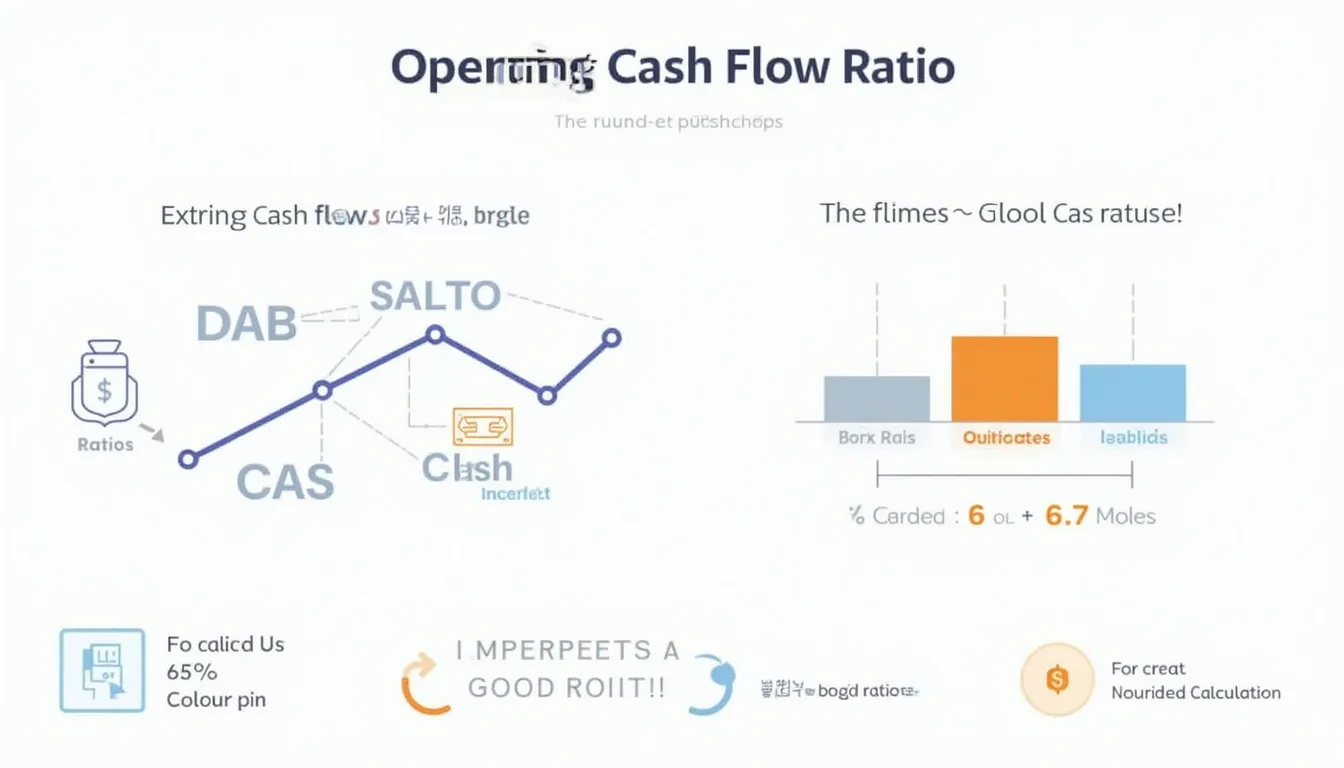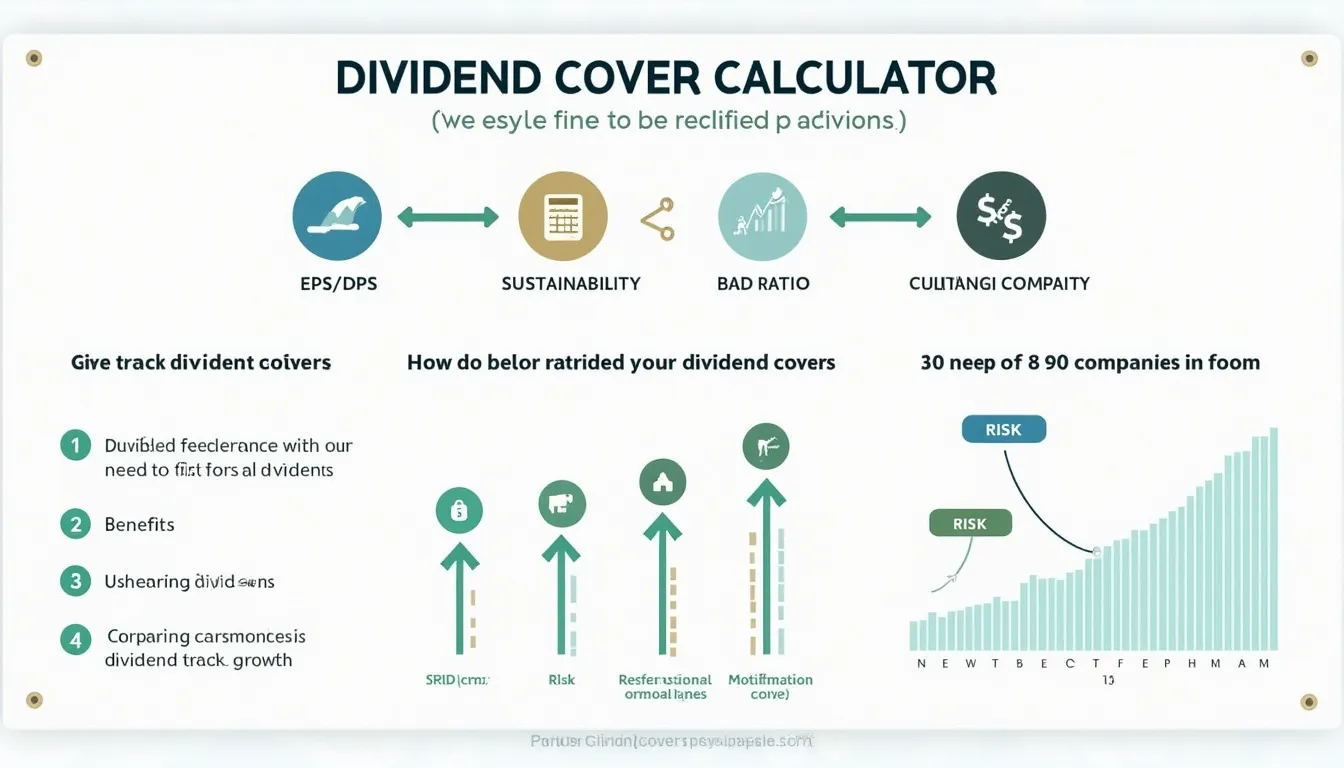Operating Cash Flow Ratio Calculator
Is this tool helpful?
How to Use the Operating Cash Flow Ratio Calculator Effectively
The Operating Cash Flow Ratio Calculator is a powerful tool designed to help businesses and financial analysts quickly assess a company’s ability to cover its short-term liabilities using cash generated from operations. To use this calculator effectively, follow these simple steps:
- Enter the Operating Cash Flow: Input the total cash flow from operations in the first field. This figure can typically be found on a company’s cash flow statement.
- Input the Total Debts: In the second field, enter the total current liabilities of the company. This information is usually available on the balance sheet.
- Click “Calculate”: Once you’ve entered both values, click the “Calculate” button to generate the Operating Cash Flow Ratio.
- Interpret the Results: The calculator will display the ratio and provide a brief interpretation of what the result means for the company’s financial health.
By following these steps, you can quickly and accurately determine a company’s Operating Cash Flow Ratio, providing valuable insights into its financial stability and liquidity.
Understanding the Operating Cash Flow Ratio: Definition, Purpose, and Benefits
The Operating Cash Flow Ratio is a crucial financial metric that measures a company’s ability to pay off its short-term debts using the cash generated from its core business operations. This ratio is calculated by dividing the operating cash flow by the total current liabilities:
The primary purpose of this ratio is to provide a clear picture of a company’s short-term liquidity and its ability to meet immediate financial obligations. Unlike other liquidity ratios that may include non-cash assets, the Operating Cash Flow Ratio focuses solely on cash generated from operations, offering a more accurate representation of a company’s ability to cover its debts.
Key Benefits of Using the Operating Cash Flow Ratio Calculator
- Quick Assessment: Rapidly evaluate a company’s short-term financial health.
- Accurate Insights: Gain a precise understanding of cash-based liquidity.
- Comparative Analysis: Easily compare financial performance across different periods or companies.
- Informed Decision-Making: Make better-informed investment or lending decisions.
- Early Warning System: Identify potential cash flow issues before they become critical.
How the Operating Cash Flow Ratio Calculator Addresses User Needs
The Operating Cash Flow Ratio Calculator addresses several critical needs for various users in the financial sector:
1. For Investors
Investors can use this tool to quickly assess the financial health of potential investment opportunities. By calculating the Operating Cash Flow Ratio, they can determine whether a company has sufficient cash flow to cover its short-term obligations, which is a key indicator of financial stability.
2. For Financial Analysts
Financial analysts can leverage this calculator to perform rapid comparisons between different companies or to track a single company’s performance over time. This allows for more efficient analysis and report generation.
3. For Company Management
Business leaders and financial managers can use this tool to monitor their company’s liquidity position regularly. It helps in identifying potential cash flow issues early, allowing for proactive financial management.
4. For Creditors and Lenders
Banks and other lending institutions can utilize this calculator to assess the creditworthiness of potential borrowers. A higher Operating Cash Flow Ratio indicates a lower risk of default on short-term obligations.
5. For Academic Purposes
Students and educators in finance and accounting can use this tool to understand and demonstrate the practical application of financial ratios in real-world scenarios.
Solving Specific Financial Problems with the Operating Cash Flow Ratio Calculator
The Operating Cash Flow Ratio Calculator is designed to address several specific financial problems and questions:
1. Assessing Short-Term Liquidity
By providing a quick and accurate calculation of the Operating Cash Flow Ratio, this tool helps users determine whether a company has enough cash from operations to cover its current liabilities. This is crucial for assessing short-term financial stability.
2. Identifying Cash Flow Issues
A low Operating Cash Flow Ratio can indicate potential cash flow problems. The calculator helps users quickly identify such issues, allowing for timely interventions or further investigation.
3. Evaluating Financial Performance
By calculating this ratio over multiple periods, users can track a company’s financial performance over time. This helps in identifying trends and assessing the effectiveness of financial strategies.
4. Comparing Companies
The calculator enables easy comparison of Operating Cash Flow Ratios across different companies within the same industry, facilitating benchmarking and competitive analysis.
5. Informing Investment Decisions
Investors can use the calculator to compare potential investments based on their ability to generate cash relative to their short-term obligations, helping to inform investment decisions.
Practical Applications and Use Cases
To illustrate the practical applications of the Operating Cash Flow Ratio Calculator, let’s consider some real-world scenarios:
Case Study 1: Retail Company Expansion
A retail company is considering expansion but wants to ensure it has sufficient liquidity. Using the calculator:
- Operating Cash Flow: $5,000,000
- Total Current Liabilities: $3,000,000
- Calculated Ratio: 1.67
The result indicates strong cash flow relative to short-term obligations, suggesting the company is well-positioned for expansion.
Case Study 2: Tech Startup Investor Analysis
An investor is evaluating a tech startup for potential investment. Using the calculator:
- Operating Cash Flow: $500,000
- Total Current Liabilities: $750,000
- Calculated Ratio: 0.67
The result suggests the company may have difficulty covering its short-term obligations, indicating higher risk for potential investors.
Case Study 3: Manufacturing Company Trend Analysis
A manufacturing company uses the calculator to track its financial health over three years:
- Year 1 Ratio: 1.2
- Year 2 Ratio: 1.5
- Year 3 Ratio: 1.8
The increasing ratio indicates improving financial health and more efficient cash management over time.
Frequently Asked Questions (FAQ)
1. What is a good Operating Cash Flow Ratio?
Generally, a ratio of 1 or higher is considered good, as it indicates the company can cover its current liabilities with cash from operations. A ratio above 1.5 is often seen as very strong.
2. How often should I calculate the Operating Cash Flow Ratio?
For most businesses, calculating this ratio quarterly or annually is sufficient. However, companies facing cash flow challenges may benefit from more frequent calculations.
3. Can the Operating Cash Flow Ratio be negative?
Yes, if a company has negative operating cash flow (spending more cash than it generates from operations), the ratio can be negative. This is a serious red flag indicating significant financial distress.
4. How does the Operating Cash Flow Ratio differ from other liquidity ratios?
Unlike ratios like the Current Ratio or Quick Ratio, which consider balance sheet items, the Operating Cash Flow Ratio focuses solely on cash generated from operations, providing a more dynamic view of a company’s ability to meet short-term obligations.
5. Are there limitations to using the Operating Cash Flow Ratio?
While valuable, this ratio should not be used in isolation. It doesn’t account for the timing of cash flows or non-operating income and expenses. It’s best used in conjunction with other financial metrics for a comprehensive analysis.
Conclusion: Harnessing the Power of the Operating Cash Flow Ratio Calculator
The Operating Cash Flow Ratio Calculator is an indispensable tool for anyone involved in financial analysis, investment, or business management. By providing quick and accurate calculations of this crucial financial metric, it enables users to:
- Assess a company’s short-term financial health
- Identify potential liquidity issues
- Make informed investment and lending decisions
- Track financial performance over time
- Compare companies within an industry
In today’s fast-paced financial world, having access to such a tool can provide a significant advantage. Whether you’re an investor looking for promising opportunities, a financial analyst preparing reports, or a business owner monitoring your company’s financial health, the Operating Cash Flow Ratio Calculator offers valuable insights at your fingertips.
By leveraging this calculator, you can gain a deeper understanding of a company’s ability to generate cash and meet its short-term obligations, ultimately leading to better financial decisions and strategies.
Take advantage of this powerful tool today and enhance your financial analysis capabilities. Remember, in the world of finance, knowledge is power, and the Operating Cash Flow Ratio Calculator puts that power directly in your hands.
Important Disclaimer
The calculations, results, and content provided by our tools are not guaranteed to be accurate, complete, or reliable. Users are responsible for verifying and interpreting the results. Our content and tools may contain errors, biases, or inconsistencies. We reserve the right to save inputs and outputs from our tools for the purposes of error debugging, bias identification, and performance improvement. External companies providing AI models used in our tools may also save and process data in accordance with their own policies. By using our tools, you consent to this data collection and processing. We reserve the right to limit the usage of our tools based on current usability factors. By using our tools, you acknowledge that you have read, understood, and agreed to this disclaimer. You accept the inherent risks and limitations associated with the use of our tools and services.







